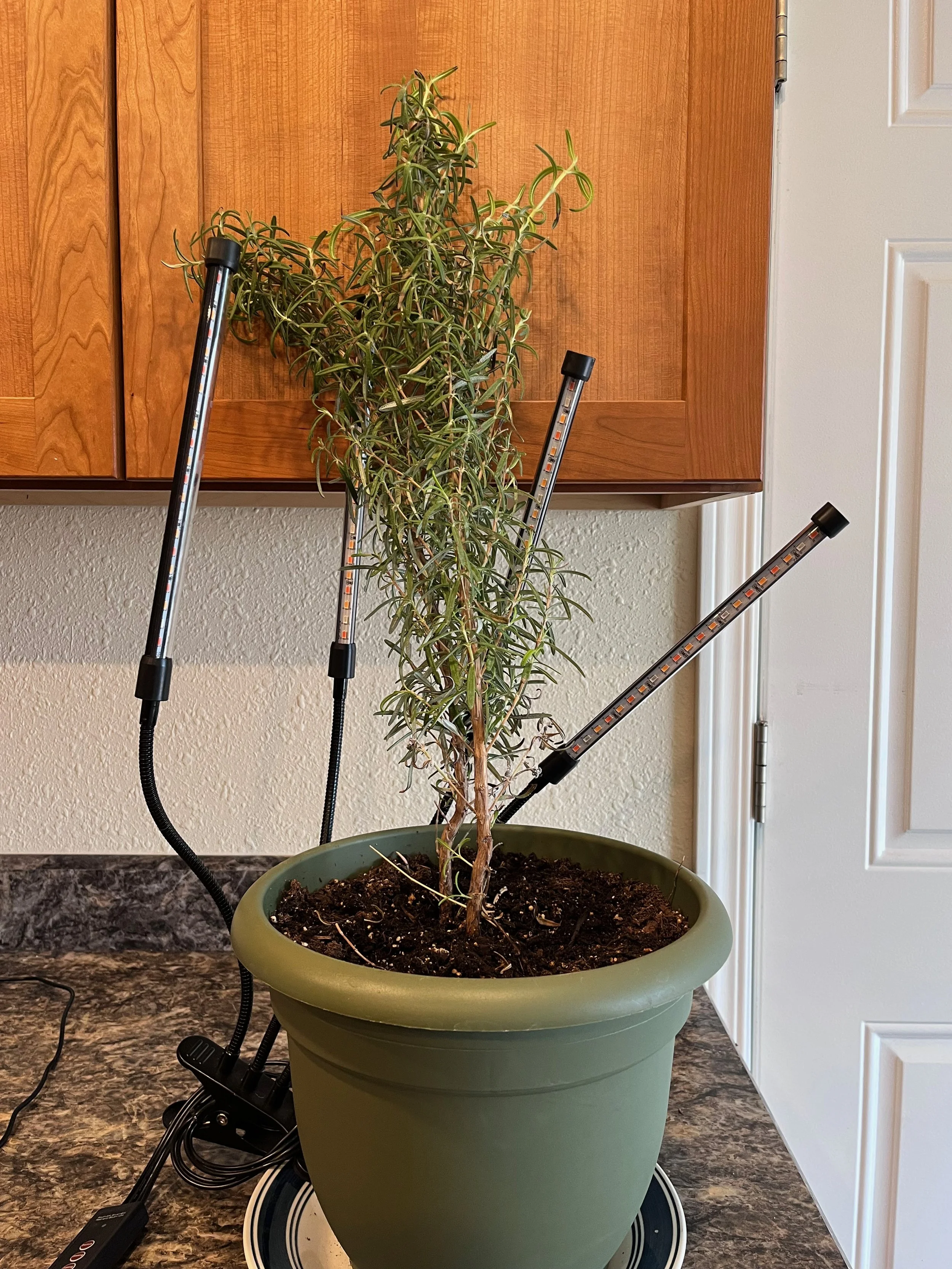Winter Gardening
Photography by Amy Grisak
Gardeners are not patient people. Many are already perusing seed catalogs, if orders aren’t already placed, and plotting out the 2023 gardens. For some, starting seeds is a good way to scratch the proverbial itch, but new technology has created the opportunity to grow a winter crop of herbs and vegetables without much fuss.
The greatest challenge of winter indoor gardening is lack of light. Most vegetables and herbs require 14 to 18 hours of light per day. With barely over eight hours of daylight in the dead of winter, placing plants in the windows simply doesn’t cut it.
For many years, grow lights were to be suspended on racks, consuming large amounts of space. Today, there are far more options, particularly with the rise of LED lights. Florescent bulbs were the standard choice in the past, but LEDs provide the full range of the light spectrum plants require, plus they are far more energy efficient. Of further advantage, LED lights are available in various stands and flexible configurations. For example, some lights can be bent toward a specific plant or group of plants, saving the step of hanging lights or creating an unwieldy light system.
Growing plants through winter can begin at the end of the gardening season, or as a fresh start with new seedlings. Each autumn, rosemary plants can be dug up and moved inside, for instance. While rosemary grows like gangbusters during hot summers, it won’t survive the brutal winter. But if dug prior to a hard freeze and gradually acclimated to indoor conditions, there’s a better chance of a second season for the herb. Indoor rosemary, however, is fragile. Too hot or cold, too wet or dry, or even too drafty of conditions will wither the stand. Aside from providing adequate light, place rosemary away from heating vents, yet in a warm area, and water consistently. The same standards can be applied to any indoor herbs. While most are not nearly as picky as rosemary, they produce more during the off season when properly “pampered.”
Greens are another popular option for indoor crops as they’re compact and quick growing. Planted in a container that is three to four inches deep, with seeds two to three inches apart, with enough light, even watering, and occasional water-soluble fertilizer, winter salads can be harvested in just over a month.
With the development of more container vegetable varieties, it’s now feasible to grow a small summer garden indoors. Of course, corn and pumpkins are likely off the table, but there are some terrific container varieties ranging from cucumbers to peppers.
The ‘Red Robin’ tomato has been an impressive producer. Master gardener Pat Parker and his wife, Becky, grow the plants for Ace Hardware from their home at Ulm and he suggested the tomato variety for winter gardening.
“We have grown it for about 15 years, and it is one of our favorites,” Parker said. “It does very well inside in this area. Some of our customers have kept the same plant alive for three years.”
Red Robin tomatoes are approximately one foot tall, yet provide a bounty of robin egg sized fruit. Carrie Spoonemore of Park Seed said the variety was developed by Sakata Seed in Japan in the 1970s with the goal of creating a tomato that was “small, sweet, and easy to grow.” What they didn’t realize at the time was they created a plant which would eventually be sent to space.
“NASA selected this tomato variety to grow at the International Space Station and as a control at NASA’s Kennedy Space Center,” Spoonemore explained. “The project was designed to confirm that nutritious, high-quality produce can be reliably grown in deep space, or to provide a baseline to guide the development of countermeasures to protect future crop foods from radiation during missions beyond low-Earth orbit.”
If the tomato can grow in deep space, it will grow through Montana and Wyoming winters. If Red Robin tomato plants aren’t available, the seed can be started at home by planting it in at least a two-gallon container – although a five-gallon one is best, particularly if the intention is to keep it for several seasons.
Home hydroponic units have also changed winter gardening as the systems have been simplified enough to where users of any level of experience can have success. The Rise Gardens hydroponic unit has an easy-to-use phone app that walks through the process of when to start plants, when to place them in the garden unit, when to change the water, and when to add nutrients. The light and pump are both automatic, but they can also be switched on or off from a cell phone. Once familiarized with the process, the app isn’t necessary for day-to-day use but it’s there when needed. Rise Gardens includes seeds pre-planted in pods, which are germinated outside the unit. Once there are leaves, the plants are thinned to one per pod, then placed in the hydroponic garden unit. The root growth is impressive after only a few weeks and greens are already within eating size.
By embracing new technology, northern growing seasons can be substantially extended and far more successful than those of the past when gardeners were to rely on raising sprouts in a jar for something green and fresh to eat. Today, full garden plots growing right on the countertop make for fresh, fun winter projects.






